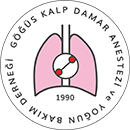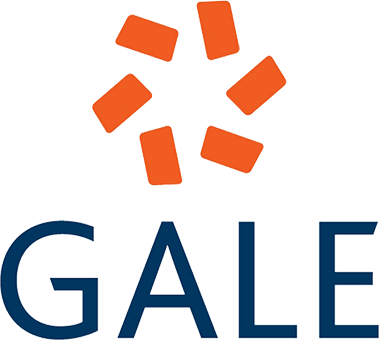

Effects of Lower Tidal Volumes on Oxygenation During One-Lung Ventilation
Zerrin Sungur Ülke1, Birsen Köse1, Emre Çamcı1, Ayşen Yavru1, Kemalettin Koltka1, Alper Toker2, Şükrü Dilge2, Mert Şentürk11Istanbul Medical Faculty, Anaesthesiology Clinic2Istanbul Medical Faculty, chest surgery Clinic
OBJECTIVE: In one-lung ventilation (OLV), use of same tidal volumes (TV) as in two-lung ventilation (TLV) is recommended. However, lower TVs are recently found to be associated withrelatively reduced inflammatory response. The aim of this study is to compare the effects of conventional ventilation using higher tidal volumes with those of the reduced TV application during OLV on the oxygenation.
METHODS: Thirty-one patients scheduled for elective lung resection were randomly assigned to two ventilation strategies in two different sequences using pressure-controlled ventilation (PCV) during OLV. During TLV, ventilation pressures were adjusted to obtain a TV required for the maintenance of normocapnia. During OLV, TVs were adjusted either by increasing the ventilation pressure to obtain the same TV as in TLV (normocapnic stage: StN) or artificial respiration was maintained by remaining in the same ventilation pressure as in TLV and allowing a hypercarbic state (hyypercapnic stage: StH). In each patient, both methods of the study were applied in two stages. At the end of every stage, PaO2, PaCO2, TV, and Qs/Qt were recorded.
RESULTS: There was a significant difference in TV (569±180 mL vs 399±136 mL; p<0.001) and in PCO2 (39.1±6.2 mmHg vs 46±7.6 mmHg; p<0.001) between StN and StH, respectively. In other words in our study TV values were significantly lower in StN, while PaCO2 measurements were found to be significantly higher in StH. There was a slight but insignificant decrease in PaO2 and a slight but insignificant increase in Qs/Qt during StH compared to StN (StN vs StH: 192±56 mmHg vs 176±50 mmHg; and 28.7±8.8 % vs 31.4±8.4 %).
CONCLUSION: Since lower TVs do not result in any important clinical change in oxygenation during OLV, ventilation with lower TV can be used without any hesitation
Keywords: tidal volume, one-lung ventilation, oxygenation, shunt
Düşük Soluk Hacimlerinin Tek Akciğer Ventilasyonunda Oksijenasyon Üzerine Etkileri
Zerrin Sungur Ülke1, Birsen Köse1, Emre Çamcı1, Ayşen Yavru1, Kemalettin Koltka1, Alper Toker2, Şükrü Dilge2, Mert Şentürk11İ.ü. İstanbul Tıp Fak. Anesteziyoloji Ad2İ.ü. İstanbul Tıp Fak. Göğüs Cerrahisi Ad
AMAÇ: Tek akciğer ventilasyonu (TAV) esnasında çift akciğer ventilasyon sürecine benzer soluk hacmi uygulanması önerilmektedir. Öte yandan yeni çalışmalar düşük soluk hacmi kullanımının, daha az enflamasyon yanıtı ile birlikte olduğunu göstermektedir. Bu çalışmanın amacı TAV sırasında geleneksel yüksek soluk hacim yaklaşımı ile azaltılmış soluk hacmi (TV) uygulamasının oksijenasyon üzerine etkilerini karşılaştırmaktır.
YÖNTEMLER: Elektif akciğer rezeksiyonu planlanan 31 hastaya TAV sırasında iki farklı ventilasyon modeli, iki bölüm halinde basınç kontrollü modda uygulandı. Çift akciğer ventilasyonunda (ÇAV) normokapniyi sağlayacak TV ayarlandı. Sonrasında TAV sırasında ya normokarbiyi sağlayacak TV korunarak (normokarbik evre; EN) ya da basınç korunup hiperkarbiye izin vererek yapay solunum sürdürüldü (hiperkarbik evre; EH). Çalışmanın her iki evresi tüm olgularda iki aşamalı olarak uygulandı. Her aşamada PaO2, PaCO2, TV ve Qs/Qt kaydedildi.
BULGULAR: Çalışmamızda EHde ENye göre TV değerleri anlamlı olarak düşük (sırasıyla 399±136 mL ve 569±180 mL; p<0.001) bulunurken PaCO2 değerleri EHde anlamlı olarak yüksek (46±7.6 mmHg ve 39.1±6.2 mmHg vs; p<0.001) bulunmuştur. Yine EHde PaO2 değerleri bir miktar düşük seyretmiş, ancak bu düşüklük istatistiksel anlamlılık göstermemiştir. Benzer şekilde Qs/Qt oranında iki evre arasında anlamlı fark gözlenmemiştir.
SONUÇ: Düşük TV uygulaması TAV sırasında oksijenasyonda ciddi değişikliğe yol açmadığından, çekincesiz olarak kullanılabilir.
Anahtar Kelimeler: soluk hacmi, tek akciğer ventilasyonu, oksijenasyon, şant
Manuscript Language: Turkish

















